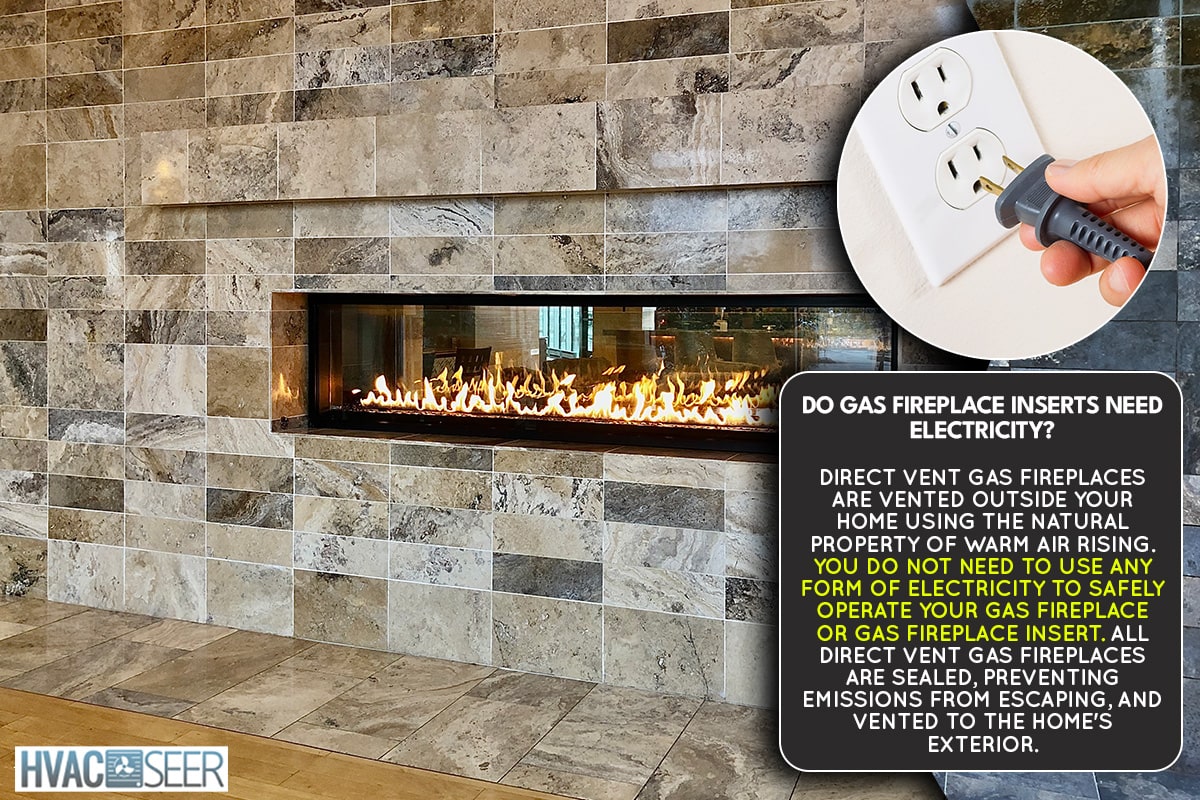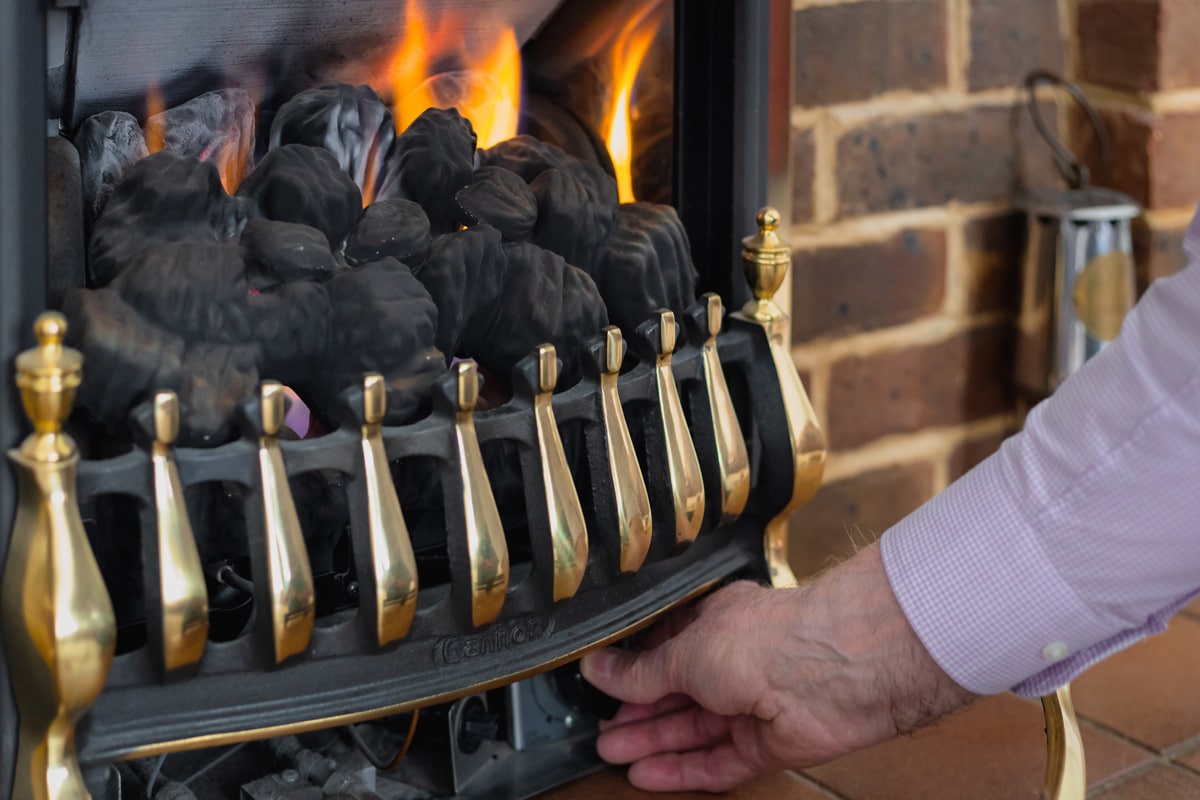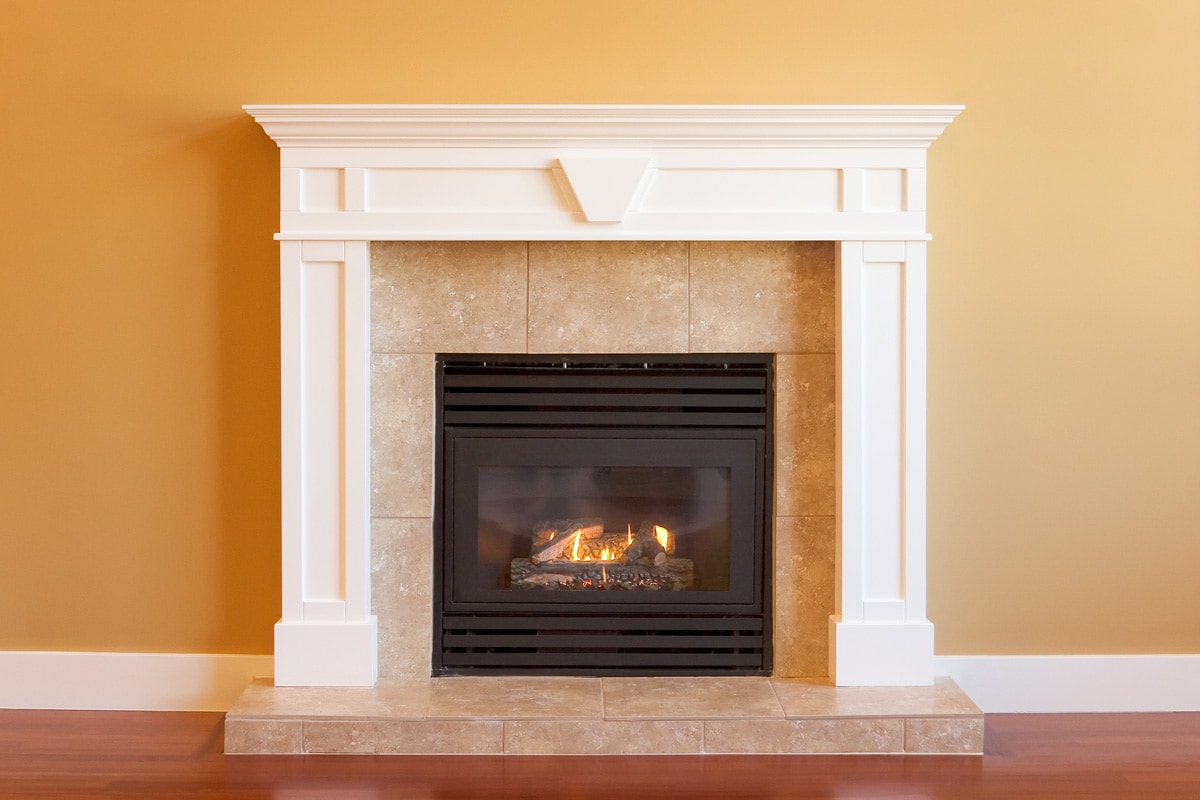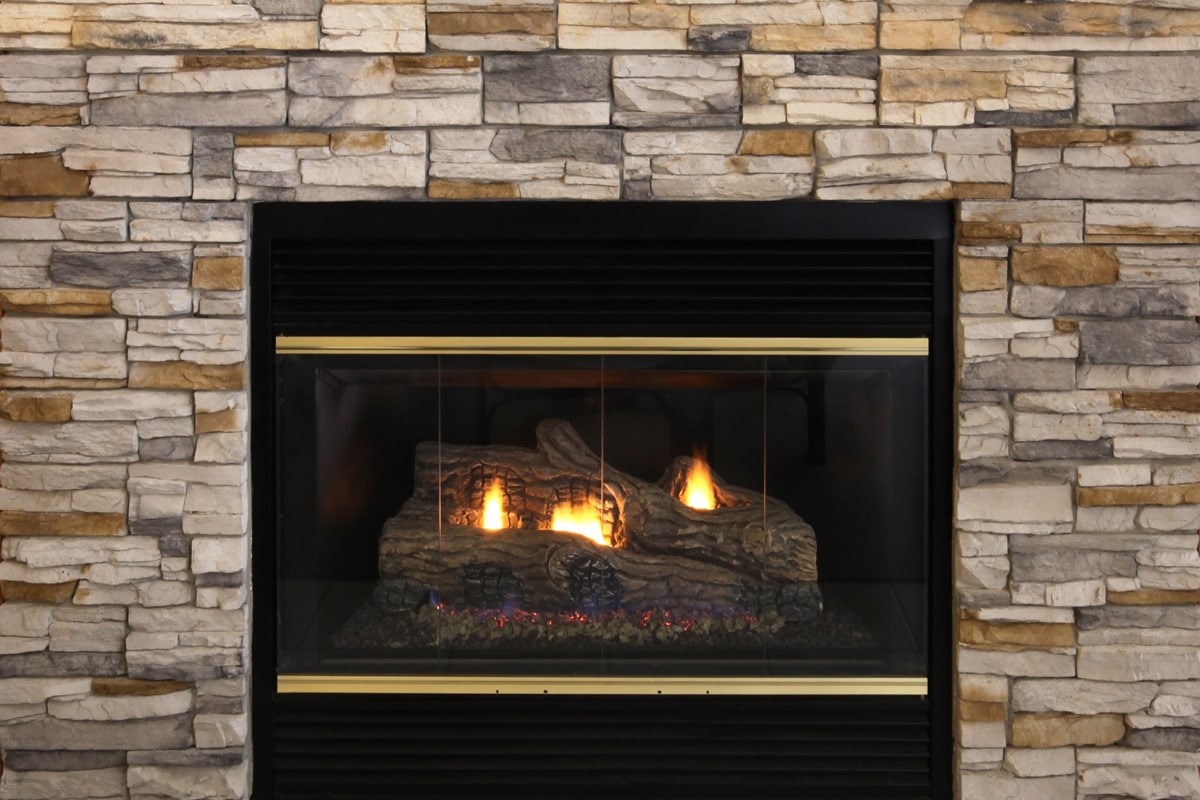A gas fireplace has advantages that place it over other options. The constant temperature, in contrast to one with logs, provides a steady stream of heat. Also, purchasing or chopping firewood is not needed, which benefits the natural environment. You might be wondering if your fireplace inserts need electricity to function. Here's what we gathered after consulting with experts.
Direct vent gas fireplaces are vented outside your home using the natural property of warm air rising. You do not need to use any form of electricity to safely operate your gas fireplace or gas fireplace insert. All direct vent gas fireplaces are sealed, preventing emissions from escaping, and vented to the home's exterior.
Keep on reading as the article discuss all you need to know about gas fireplace and electricity. We would also discuss how gas fireplace inserts work.

How Do Gas Fireplace Inserts Work?
Inserts for gas fireplaces consist of a smaller metal box that fits into the existing fireplace and a larger metal box that sits on top of the smaller metal box.
The space in between these two boxes is where the heat is generated, and the firebox is where it is released. Because they generate both convective and radiant heat, as well as a constant flow of warm air, gas inserts are an excellent choice for home heating.
Do Gas Fireplace Inserts Need Electricity?

Although gas fireplaces require a spark in order to ignite the pilot light and flames, traditionally, the vast majority of gas fireplaces had their own independent ignition mechanism that did not require an electrical source. This was because gas fireplaces are not connected to the electrical grid.
The spark that is necessary to ignite the gas fireplace pilot light is often supplied by a thermopile (which may also be referred to as a thermocouple) that is an integral part of the pilot light system.
How Are Gas Fireplaces Ignited?

In order to start the pilot light, a thermopile or thermocouple can generate a small quantity of electricity on its own. This spark is what's needed to get the pilot light going.
One illustration of this would be a gas fireplace insert that isn't wired into the home's electrical supply but rather employs a thermocouple spark ignition mechanism to kick off the pilot light.
By using the controls that are situated on the bottom of the front panel of this gas fireplace, a spark is produced, and the pilot flame lit.
Moving this control from the spark ignition position to the pilot light position makes it possible to ignite the pilot light without using any energy from the house. This is accomplished by turning this control through the positions.
Natural Vent Gas Fireplaces
Additionally, some gas fireplaces are what are known as natural vent gas fireplaces. This type of gas fireplace ensures that stale air is removed from the home via the chimney that is located directly above the brick fireplace in which the gas fireplace is installed.
This particular gas fireplace is solely connected to the house gas mains and not the home's electrics in any way, whether through a conventional electrical outlet socket or by being hardwired directly into the electrics.
Most gas fireplaces do not have any kind of fan to push warm air out into the room by convection; rather, it relies completely on reflecting heat out into the room in order to produce warmth.
Standing Pilot Light
However, some gas fireplaces are of an older model from the early 2000s, and while these particular gas fireplace do not need a connection to a source of power, many contemporary gas fireplaces have since added an electric component.
These older models, however, make use of a standing pilot light. Once ignited with the thermocouple or thermopile, it continues to burn so that we can instantly utilize the gas fireplace.
This method of having a pilot light on continuously can be seen as wasteful, and as a result, many modern models of gas fireplaces incorporate an Intermittent Pilot Ignition (IPI) system. This improved system enables the spark that starts the pilot light to be provided by the home's electrical supply.
Importance of The Intermittent Pilot Ignition (IPI)
An electrical supply to a gas fireplace that makes use of an IPI system enables that gas fireplace to provide the spark necessary to start the fireplace time and time again.
This eliminates the need to leave a pilot light on all the time, even when the fireplace is not being used because the spark is provided by the IPI system rather than by standing pilot light.
Suppose you are interested in purchasing a gas fireplace. In that case, it is vital to check with the seller or manufacturer of a specific gas fireplace to see whether the unit requires electricity or not (if you are unable to quickly find the answer).
Check With The Manufacturer/Dealer
If a gas fireplace does need an electrical source, the device might come with a conventional power chord; however, the exact configuration of the power cord might be different for each brand that requires electricity.
Gas fireplaces that require electricity must be built in accordance with the national or municipal rules and building regulations that are applicable to your specific region of residence, as well as the installation instructions provided by the fireplace manufacturer.
For example, a gas fireplace could require electrical grounding to function properly.
Will My Gas Fireplace Work If I Lose Power?

Because it does not rely on electricity to light the pilot flame, a gas fireplace equipped with a vertical pilot can be lit even when there is a disruption in the supply of electrical power.
The majority of gas fireplaces contain a millivolt system that generates its own power utilizing a thermopile.
Can You Use Gas Fireplace If Power Is Out?
The vast majority of gas fireplaces do not require the use of electricity to function. Electricity is not required to ignite the pilot light in gas fireplaces that have a standing or vertical configuration for the light.
Unless your gas fireplace is equipped with a backup battery, you won't be able to use it in the absence of electricity if it has a different kind of ignition mechanism other than a standard spark-generated or continually lit pilot.
Does a Remote Control Gas Fire Need Electricity?
Electricity is not necessarily required for gas fireplaces. Most modern remote-control gas fires are powered by a battery instead of an electric supply. This means they are much easier to install and much more reliable.
Does a Gas Fireplace Use a Lot of Gas?
Although the precise burn rate will differ from one fireplace to the next, the majority of fireplaces use approximately one gallon of propane per hour for every 91,500 BTU that they produce.
If you have a fireplace with a heating capacity of 100,000 BTU, you can expect to use around one gallon of propane for every hour that you operate your fireplace.
What Is a Direct Vent Gas Insert?

Combustion takes place with outside air in gas inserts that have a direct vent. As a consequence of this, the fire will not be fed by chilly air that would normally enter the home through cracks in the windows, doors, or other openings when it is a natural wood fire.
As a direct consequence of this, the air in the room will not lose as much heat and will thus warm up more quickly.
Which Is Better: Vented or Ventless Gas Fireplace?
Since no heat is lost up the chimney, ventless fireplaces are more energy efficient than vented fireplaces. As a result, using a ventless fireplace will enable you to reduce your gas utility costs.
A vented gas fireplace uses more gas to provide the same amount of heat as an unvented gas fireplace because some heat is lost through the flue.
Do Gas Fireplace Inserts Need a Chimney?
A chimney is not required for use with a gas fireplace. There are primarily two choices available to you, one being a vented gas fireplace and the other being a ventless gas fireplace.
Options that require ventilation remove potentially hazardous pollutants from the house and do not decrease the oxygen supply within the building, making them the safer choice.
You do not require a conventional chimney for either of these alternatives. Gas inserts are the fact that a built-in gas fireplace does not need an already present chimney or fireplace in order to function. Therefore, this is your only alternative if you do not already have a fireplace that burns wood in your home.
Conclusion
Most gas fireplaces are built to run without electricity. All you need to do is ensure you are getting the right gas fireplace for your space. Use the points from this article and see them as a guide to helping you get the best out of your existing gas fireplace.
For more engaging articles on fireplaces, check out these related articles:
